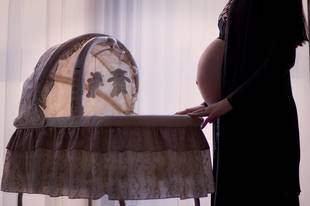
Importance of Conception
At the time of conception, four important conditions are determined that influence the individual’s later development. What role each of these conditions plays in the individual’s development will explain why the time of conception is probably the most important period in the life span.
Hereditary Endowment
The first important happening at the time of conception is the determination of the newly created individual’s hereditary endowment.
The determination of hereditary endowment affects later development in two ways. First, heredity places limits beyond which individuals cannot go. If prenatal and postnatal conditions are favorable, and if people are strongly motivated, they can develop their inherited physical and mental traits to their maximum potential, but they can go no further. Montagu has stressed, “Where we control the environment, we to some extent control heredity. Heredity, it has been said, determines what we can do, and environment what we do do”.
The second important thing about the hereditary endowment is that it is entirely a matter of chance: there is no known way to control the number of chromosomes from the maternal or paternal side that will be passed on to the child. Scheinfeld has pointed out that the birth of a given individual depends on the union of a particular ovum with a particular sperm. The probability that this particular union will occur is only 1 in 300,000,000,000,000 (300 trillion).
Sex
Determination of the individual’s sex is the second important happening at the time of conception. Sex depends on the kind of spermatozoon that unites with the ovum.
Two kinds of mature spermatozoa are produced in equal numbers. The first contains twenty-two matched chromosomes plus one X chromosome; the second contains twenty-two matched chromosomes plus one Y chromosome. The X and Y chromosomes are the sex-determining chromosomes. The mature ovum always contains an X chromosome. If it is fertilized by a Y-bearing spermatozoon, the offspring will be a boy; if it is fertilized by an X-bearing spermatozoon, the offspring will be a girl.
Once the male and female cells have united, nothing can be done to change the sex of the newly formed individual. Whether this individual is male or female will have a lifelong effect on the individual’s patterns of behavior and personality.
There are three reasons why the sex of an individual is important to lifelong development. First, each year children come under increasing cultural pressures from parents, teachers, their peer group, and society at large to develop attitudes and behavior patterns that are considered appropriate for their sex are assured of social acceptance. By contrast, children who fail to conform are subjected to criticism and social ostracism.
Second, learning experiences are determined by the individual’s sex. In the home, at school, and in play groups, children learn what is considered appropriate for members of their sex. A boy who learns to play girls’ games is labeled a “sissy” and girls who prefer boys’ games are known as “tomboys.”
Third, and perhaps most important of all, is the attitude of parents and other significant family members toward individuals because of their sex. Studies of sex preferences for offspring have revealed that the traditional preference for a boy, especially for the firstborn, still persists. Strong preferences for a child of a given sex have marked influences on parent’s attitudes, which in turn affect their behavior toward the child and their relationships with the child.
Number of Offspring
The third important happening at the time of conception or shortly thereafter is the determination of the number of offspring there will be. While most humans are singletons, multiple births also occur. Meredith has reported that 1 out of 80 births is twins, 1 out of every 9,000 is triplets, and 1 out of every 570,000 is quadruplets. There are more frequent multiple births among blacks and fewer among Chinese, Japanese, and other Mongoloid-race groups than there are among whites.
When a ripe ovum is fertilized by one spermatozoon, the result will be a singleton, unless the fertilized ovum (zygote) splits into two or more distinct parts during the early stages of cell cleavage. When this happens, the result will be identical (uniovular) twins, triplets, or other multiple births. If two or more ova are released simultaneously and are fertilized by different spermatozoa, the result will be nonidentical (also called biovular or fraternal) twins, triplets, or other multiple births.
Approximately one-third of all twins are identical. Because the chromosomes and genes of the two or more zygotes from which individuals of nonidentical multiple birth develop are not the same, their mental and physical makeups are different. By contrast, those of identical multiple birth come from the same zygote, and consequently they have the same assortment of chromosomes and genes. Children of identical multiple birth are always of the same sex, while those of nonidentical multiple birth may be of the same or opposite sex.
Effects of Development Most studies of the effects of multiple birth on development have been limited to twins for the reason that triplets, quadruplets, and other multiple births occur very infrequently and the mortality rates among them are much higher than among twins, thus making studies of them difficult if not impossible.
However, there is reason to assume that the effects of multiple birth on triplets, quadruplets, and other multiple birth on triplets, quadruplets, and other multiples is much the same as on twins though the former feel these effects to a greater extent.
The reason that multiple births affect the pattern of development is not only that there are differences in heredity but that both the prenatal environment and the postnatal environment of singletons are different from those of children of multiple birth. This contributes to different patterns of development, different patterns of behavior, and differences in personality.
Before birth, the singleton has the mother’s uterus to itself, and thus development is not affected by crowding, a factor in multiple births that will be discussed more fully in the following articles.
There are also differences in the postnatal environments of singletons and those of multiple birth. While the mother can give her undivided attention to the care of a singleton, those of multiple birth must share it. Thus during the early years, when the foundations of the personality pattern are laid, babies of multiple birth receive less mothering than singletons, and consequently they may feel unloved or actually rejected.


















